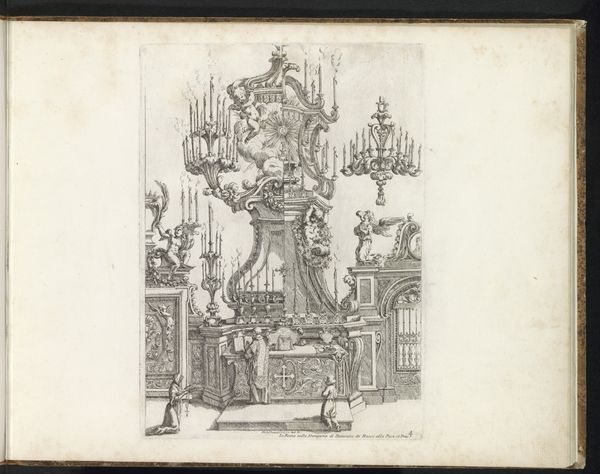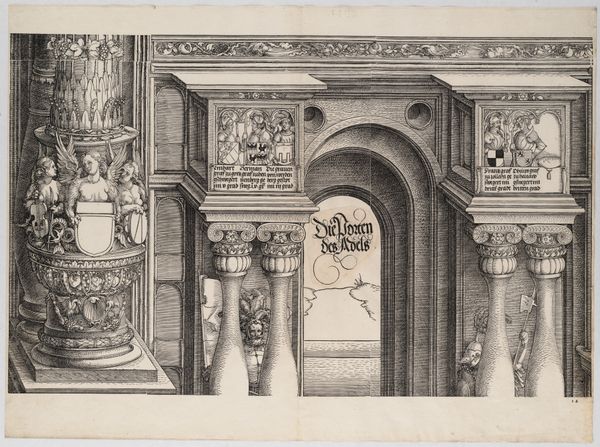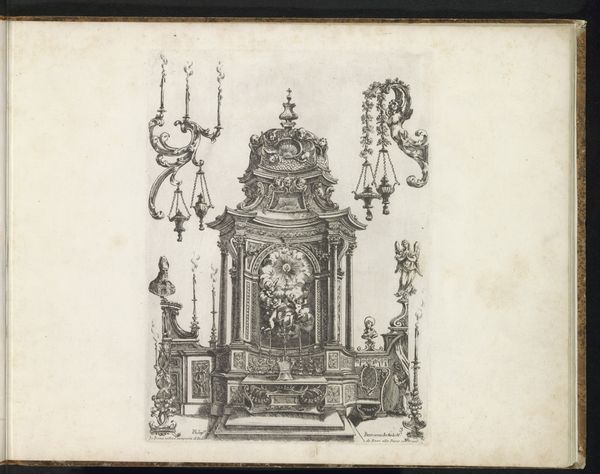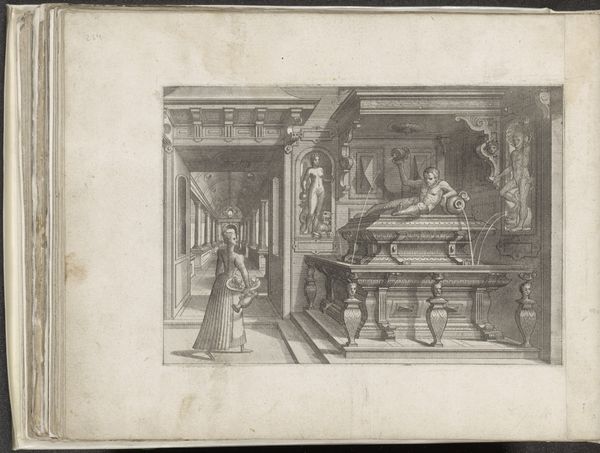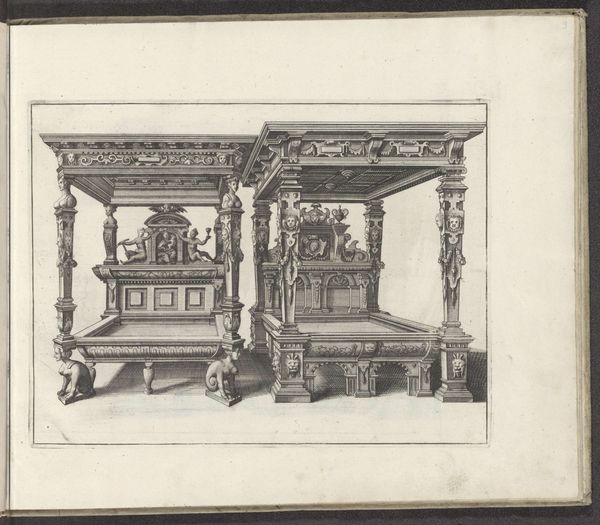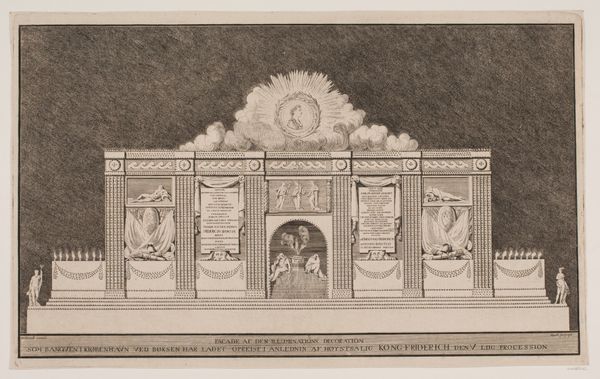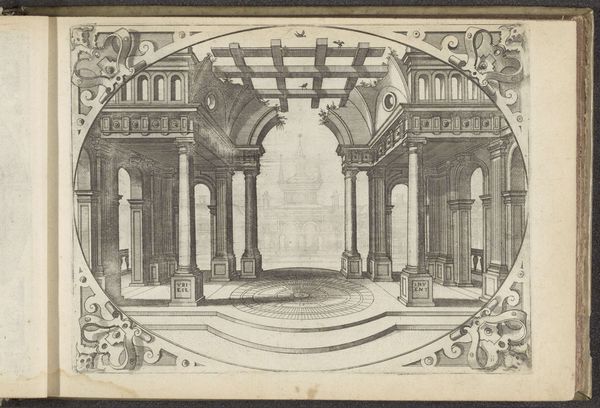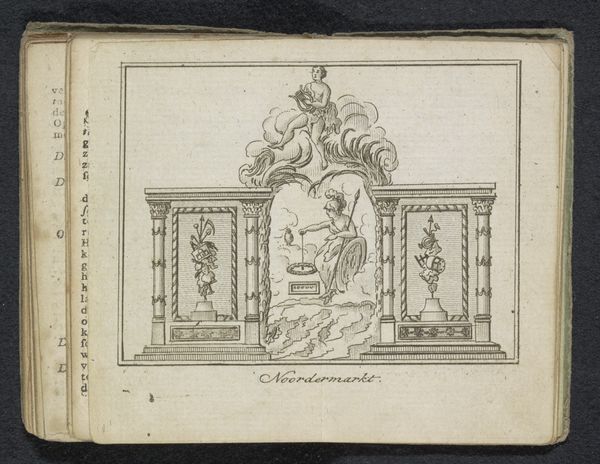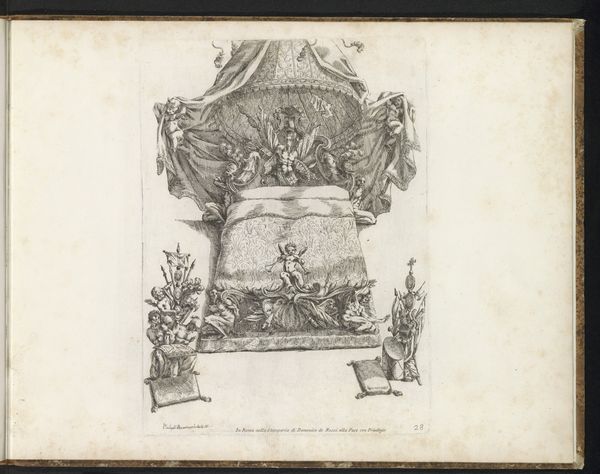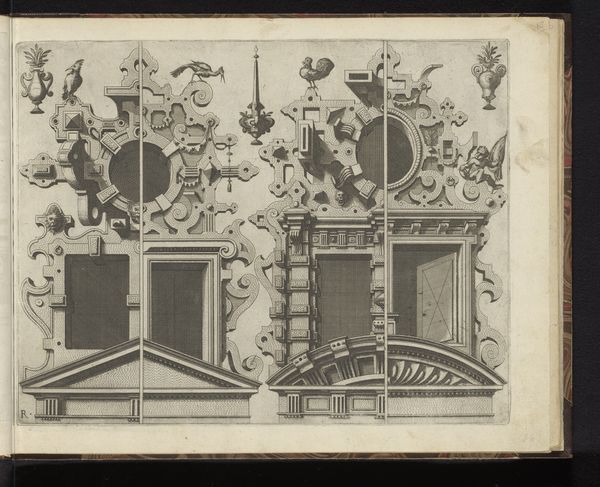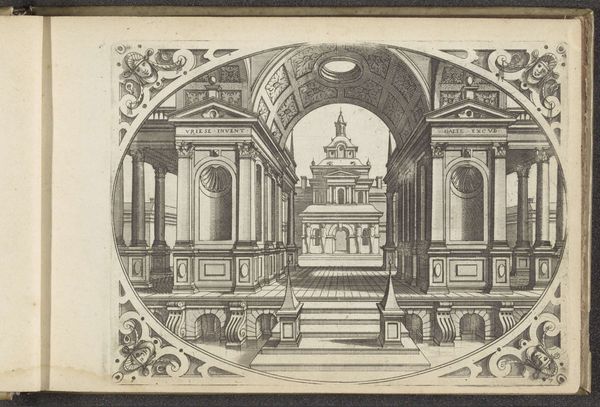
Ornamenteel wapenschild met wapen van kardinaal Giovanni Francesco Albani, de latere paus Clemens XI 1699
0:00
0:00
drawing, ink, engraving, architecture
#
drawing
#
baroque
#
ink
#
cityscape
#
history-painting
#
engraving
#
architecture
Dimensions: height 228 mm, width 333 mm
Copyright: Rijks Museum: Open Domain
Editor: This engraving from 1699 by Alessandro Specchi, titled "Ornamental coat of arms with the coat of arms of Cardinal Giovanni Francesco Albani, later Pope Clement XI," is really fascinating. The architectural rendering in ink is very precise. How do you see this piece fitting within its cultural moment? Curator: Well, I immediately consider the labor involved in creating this. The sharp lines, the detailed architectural renderings... that speaks to a specific mode of artistic production heavily reliant on skilled craftsmanship within the Baroque period. And consider the commissioning process itself. Who held the economic power to dictate the creation of such a piece? What function did it serve within those power dynamics? Editor: You mean like how it displays wealth? Curator: More than just wealth, I think it signals authority. The coat of arms itself, surrounded by this incredibly elaborate architectural design, presents Cardinal Albani as embedded within, and supported by, the very structure of Rome itself. Think of the sourcing of the materials - paper, ink, tools, and, critically, the skill needed to manipulate them. Where did those resources originate, and how does that trace back to networks of trade and influence? This wasn't simply pulled from thin air. Editor: So, it's less about the image and more about what it took to *make* the image, and how that reflects the values of the elite at the time? Curator: Precisely. And by understanding the means of production, we can start to unpack the deeper societal structures it both reflected and reinforced. Do you think Specchi was aware of this? Editor: He must have been. I never thought of looking beyond the obvious aesthetics of baroque ornamentation. Curator: Examining the material conditions of its creation changes how we read its visual elements. It exposes the web of social relations that shaped its very existence.
Comments
No comments
Be the first to comment and join the conversation on the ultimate creative platform.
